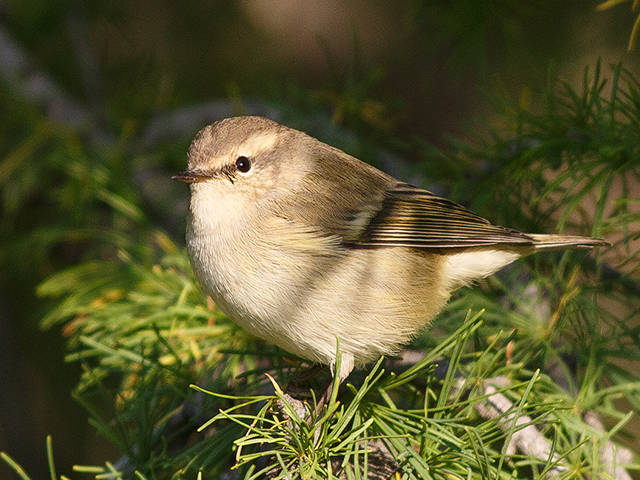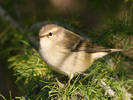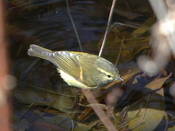search
classification
|
basic information
|
video
|
reports |
Hume's Warbler
Phylloscopus humei (Brooks, 1878)

|

|
|
|
2017-08-26
Kadji-Say, Issyk-kul region |
© Ivan Turkovskiy
|
|
Description
Hume's Warbler is resemble the Yellow-browed Warbler with which was formerly treated as conspecific; but slightly larger and much dimmer colored. The general impression of the less contrast bird; the dark colors are lighter and the light colors are darker than on the Yellow-browed Warbler. Upperparts are more grayish-green; the light supercilium often extends on the fore and connects in front of eyes. The supercilium is buffier and less whitish than on Yellow-browed Warbler. The flight feathers are greyish not blackish. Tertials are less strikingly pale-edged, while tips to greater coverts form only obvious white wing-bar, giving the impression of a bird with only one wing-bar. Median-covert bar is shorter and slightly expressed than in Yellow-browed warbler, since the tips to these feathers are light grey-green or yellowish-green, not whitish as in Yellow-browed warbler. The 2nd primary is usually shorter than 7th one.
Biology
The Hume's Warbler is common, in places abundant breeding migrant. It inhabits the mountain spruce with clearings, the larch light forests, the bushy mountain tundra, the low juniper thickets on alpine meadows, the deciduous (birch, willow) forests at 1450-2300 m in Altai, 1500-3200 m in Tien Shan and 2000-2500 m in Talasskiy Alatau. On migration it visits the forests, groves, gardens, forest-belts, bush thickets, reed-beds and tall weed thickets. It appears in mid-April – early May, majority of the birds migrate in May; latest spring migrants recorded in end May – early June. Breeds in separate pairs at 15-50 m one from another. Nest is built usually on the ground under the grass, bush, stump or stone, among the moss, tree roots, on the tussock on 20-25 cm high or even in cavity of birch stump at 1 m above the ground. Only female builds nest for 4-8 days from the dry grass and shrub bast with moss admixture, and lines it with the thin grass and some hair. Clutches of 4-7 eggs is in end May – mid-July. Only female incubates for 11-14 days. Both parents feed juveniles, which fledge at 11-15 days old, in the end June – late July. One brood reared per year, but on the early spring years the two broods are probable. Repeated breeding after the losing of the first nest is common. Autumn migration starts in August, majority of birds migrate in September, latest autumn migrants recorded in mid – end October, sometimes singles linger up to mid-November (or ever 10 December 1986 in Almaty!).
References
Э.И.Гаврилов. "Фауна и распространение птиц Казахстана". Алматы, 1999. Gavrilov E. I., Gavrilov A. E. "The Birds of Kazakhstan". Almaty, 2005.












